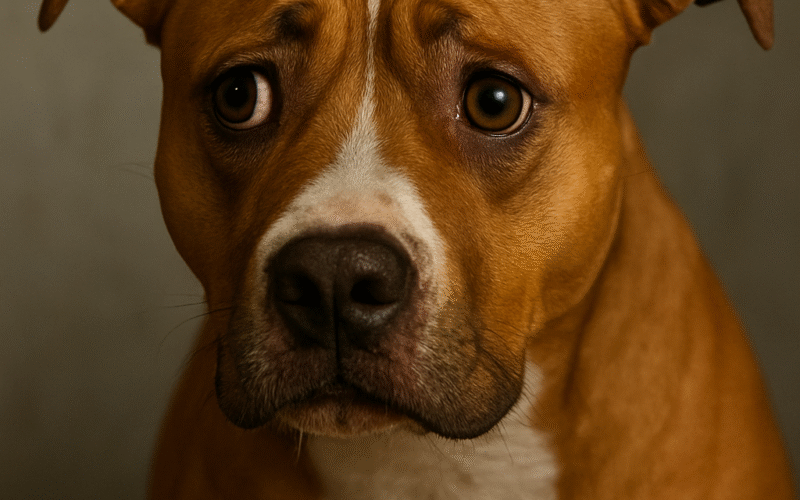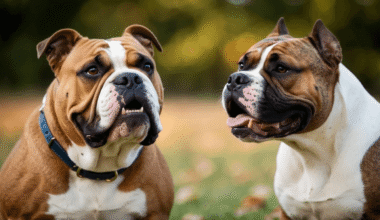
Have you ever locked eyes with your pit bull and wondered what it meant? Some owners feel a rush of warmth when their dog stares lovingly at them, while others worry: Is my dog challenging me? With pit bulls in particular, this question matters because of the myths surrounding the breed.
Eye contact is one of the most powerful ways dogs communicate, but its meaning depends on context. In this long-form guide, we’ll decode pit bull eye contact, distinguish between affectionate gazes and warning stares, and help you interpret your dog’s overall body language so you can build a stronger, healthier bond.
Why Do Pit Bulls Make Eye Contact?
Dogs are highly social animals, and pit bulls are known for their loyalty and eagerness to connect with their people. Eye contact is one of their most direct communication tools. Let’s look at the main reasons your pit bull may fix their gaze on you:
1. Bonding and Trust Building
When a pit bull gazes at you softly, it’s often a sign of deep trust. Research shows that mutual eye contact between dogs and humans can increase oxytocin, the hormone linked to bonding. This is the same hormone released when mothers gaze at their babies. Your pit bull’s stare can literally be their way of saying “I love you.”
2. Attention-Seeking Behavior
Pit bulls are intelligent and energetic. If your dog wants food, playtime, or affection, they’ll use eye contact to get your attention. A pit bull might sit in front of you, stare intently, then tilt its head or paw at you. This combination of behaviors is designed to make you respond.
3. Training and Obedience
During training, eye contact is essential. A pit bull that looks at you while waiting for cues is showing engagement and willingness to learn. Trainers often use commands like “watch me” to strengthen focus. When your dog responds with consistent eye contact, it shows motivation and respect. Tab to read and find more essential training tips.
4. Emotional Awareness
Pit bulls are sensitive to human emotions. If you’re upset, anxious, or happy, your dog may lock eyes with you to read your mood. They’ve evolved to pick up on subtle cues in our expressions, and eye contact is a gateway into understanding what we’re feeling.
5. Curiosity
Sometimes, the reason is simple: your pit bull is just curious about what you’re doing. If you’re holding an unfamiliar object, talking on the phone, or cooking, your dog may stare with wide, interested eyes.
In short, pit bull eye contact is not one-dimensional. It can mean love, curiosity, attentiveness, or a request for interaction.
Signs of Affection in Pit Bull Eye Contact
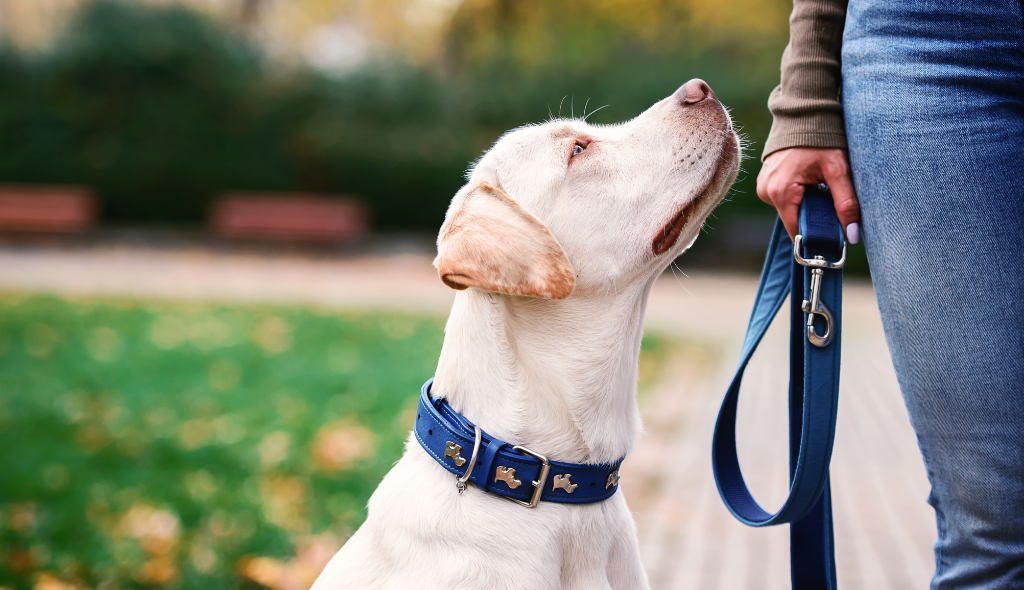
One of the most rewarding experiences as a pit bull owner is recognizing when your dog is showing love through their gaze. Here’s how to spot affectionate eye contact:
1. Soft, Relaxed Gaze
Affectionate eye contact is characterized by relaxed eyes that may blink naturally. The gaze is steady but not intense. Think of it as the canine version of a smile.
2. Loose Body Language
Look at the rest of your pit bull’s body. Affectionate eye contact is usually accompanied by:
- A gently wagging tail
- Relaxed ears
- An open mouth or even a goofy grin
- A wiggly posture
3. Eye Contact During Affectionate Moments
If your pit bull makes eye contact while lying next to you, resting their head on your lap, or during play, it’s a sure sign of love. Dogs often use gaze to reinforce positive interactions.
4. The Science of the “Oxytocin Effect”
Studies show that mutual eye contact between dogs and owners raises oxytocin levels for both. This hormone helps strengthen emotional bonds and feelings of security. Your pit bull staring lovingly into your eyes is literally rewiring your brain to feel closer to them.
5. Mimicking Human Affection
Pit bulls often mirror their owners. If you smile or talk sweetly while looking at your dog, they may stare back, reinforcing the emotional loop of affection.
When Eye Contact May Be a Challenge
Not every stare is loving. In certain contexts, eye contact can be a challenge or a warning. This doesn’t mean your pit bull is “mean” or “dangerous,” but rather that they’re communicating discomfort.
1. The Hard Stare
A prolonged, unblinking stare with wide eyes is often a warning sign. It’s more intense than a loving gaze and can signal that your dog is guarding a resource or feeling threatened.
2. Accompanying Tension
If the stare is paired with:
- A stiff body
- Upright posture
- Rigid tail
- Ears forward and alert, then eye contact is likely a warning.
3. Closed Mouth and Tight Lips
Unlike affectionate gazes, challenging stares often occur with a closed, tense mouth. Some pit bulls may even growl softly if they feel pushed too far.
4. Context: Dog-to-Dog Staring
Pit bulls may also use hard eye contact with other dogs during tense interactions. For example, two dogs may lock eyes when determining who will back down in a dominance situation.
5. Owner Misinterpretation
Because pit bulls are strong, their stares can feel intimidating. But it’s essential to avoid misreading every prolonged look as aggression. Always interpret the situation holistically.
Reading the Whole Picture—Pit Bull Body Language
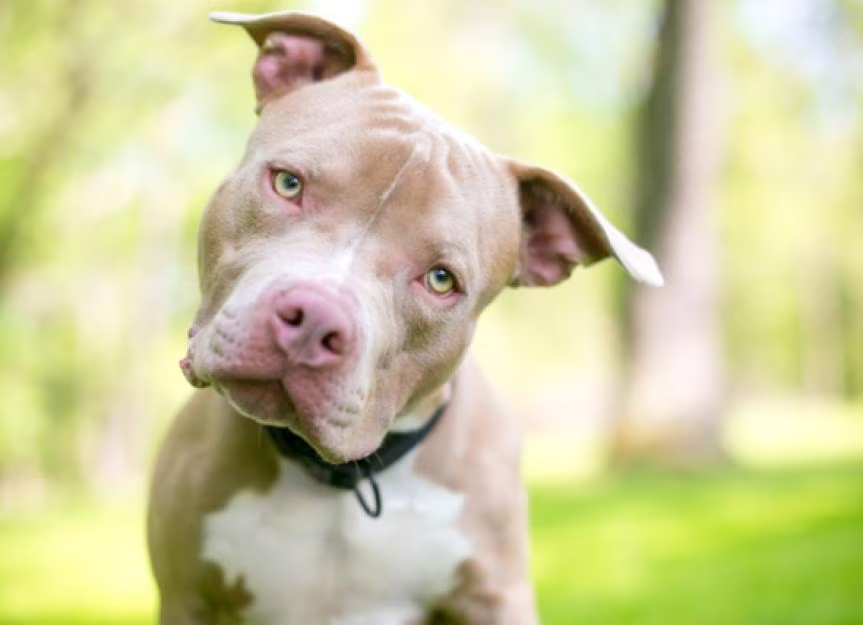
Eye contact is just one piece of the puzzle. To understand your pit bull’s emotions, you need to interpret their entire body language.
Ears
- Relaxed ears = calm and friendly.
- Pinned back = fear, anxiety, or submission.
- Forward and stiff = alertness or possible aggression.
Tail
- Loose wag = friendliness.
- High and stiff = dominance or alertness.
- Tucked = fear or anxiety.
Mouth
- Open, tongue out = relaxed.
- Closed lips = stress.
- Showing teeth depends on context (playful grin vs. snarl).
Posture
- Loose, wiggly = affection and excitement.
- Stiff, upright = challenge or defensive stance.
- Cowering = fear or submission.
Eyes in Context
Combine these cues with eye contact. A soft gaze with a wagging tail is affectionate, while a hard stare with stiff posture is a warning.
Common Misconceptions About Pit Bull Staring
Because pit bulls are often misunderstood, their eye contact is sometimes misinterpreted. Let’s debunk a few myths:
- “A staring pit bull is always aggressive.”
False. Most pit bull stares are affectionate or curious. Aggressive stares are usually paired with other warning signs. - “Avoid eye contact with pit bulls, or they’ll attack.”
False. While forced, prolonged staring can feel confrontational, natural eye contact is a bonding tool. - “Pit bulls use eye contact differently than other breeds.”
False. All dogs use eye contact in similar ways. Pit bulls just suffer from stereotypes that skew interpretation.
What Experts Say About Dog Eye Contact
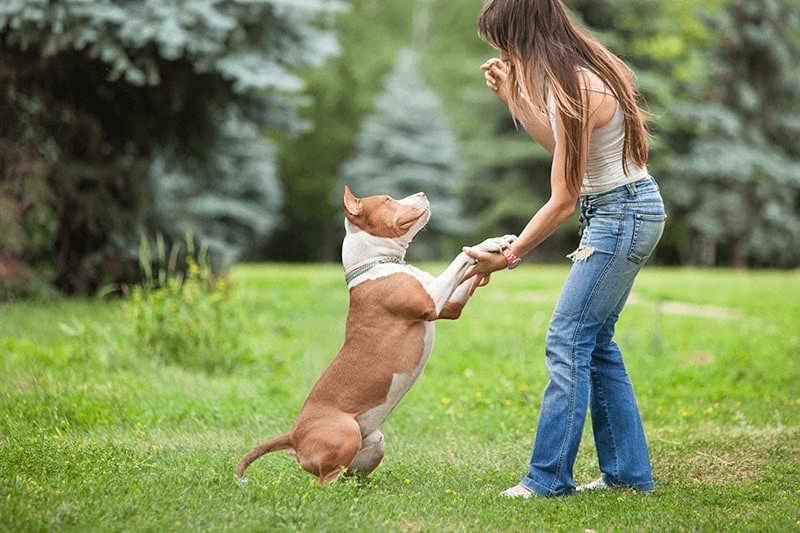
Veterinarians, trainers, and behaviorists all emphasize the importance of context in interpreting eye contact.
- Veterinarians note that medical conditions like vision problems or neurological issues can sometimes cause unusual staring behavior.
- Trainers recommend using eye contact in positive reinforcement training to increase focus and obedience.
- Behaviorists stress that pit bulls, like all dogs, use eye contact as part of a broader communication system, not in isolation.
FAQs on Pit Bull Eye Contact
Q: Why does my pit bull stare at me while I eat?
A: They’re hoping for food or a taste of what you have. This is normal, but you can train them not to beg.
Q: Should I stare back at my pit bull?
A: Yes, if it’s soft and affectionate eye contact. Avoid intense, prolonged staring that could feel confrontational.
Q: Why does my pit bull stare at me when I’m sad?
A: Dogs are empathetic and may be trying to comfort you.
Q: My pit bull stares at me before bedtime. Why?
A: They may be waiting for a cue, asking for comfort, or signaling that they’re ready to settle down.
Q: Can staring be a sign of aggression in pit bulls?
A: Yes, but only when paired with stiff posture, hard eyes, and other warning signals.
How to Build Trust Through Eye Contact
Eye contact can be a powerful tool for deepening your relationship with your pit bull. Here’s how to use it to your advantage:
1. Reward Calm Gazes
When your pit bull looks at you softly, reward them with praise or a treat. This reinforces positive associations with eye contact.
2. Teach “Watch Me”
Use a command like “watch me” in training to encourage eye contact. This helps improve focus and builds stronger communication.
3. Avoid Forced Eye Contact
Never force eye contact, especially with an unfamiliar dog. This can feel threatening and backfire.
4. Pair Eye Contact with Positivity
Make sure your pit bull associates looking at you with good experiences: treats, petting, or playtime.
5. Respect Boundaries
If your pit bull looks away, don’t push. Respect their choice and give them space.
Conclusion
Eye contact with your pit bull is a window into their emotional world. A soft gaze with relaxed body language often signals affection and trust, while a hard stare combined with stiffness can be a challenge or warning. The key is context: always read the entire body language and situation. By rewarding affectionate eye contact, using it in training, and avoiding confrontational stares, you can deepen your bond with your pit bull and help dismantle harmful stereotypes about this loyal, loving breed.
Want to learn more about strengthening your relationship with your pit bull? Check out these helpful resources:
ASPCA Dog Behavior and Training
Best Friends Animal Society: Understanding Dog Body Language

